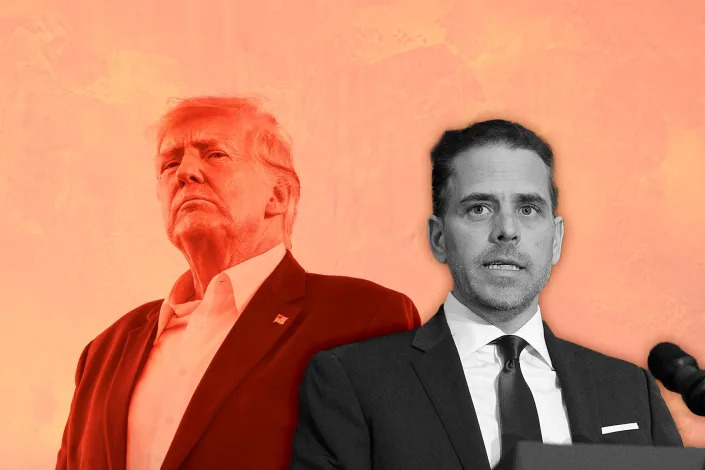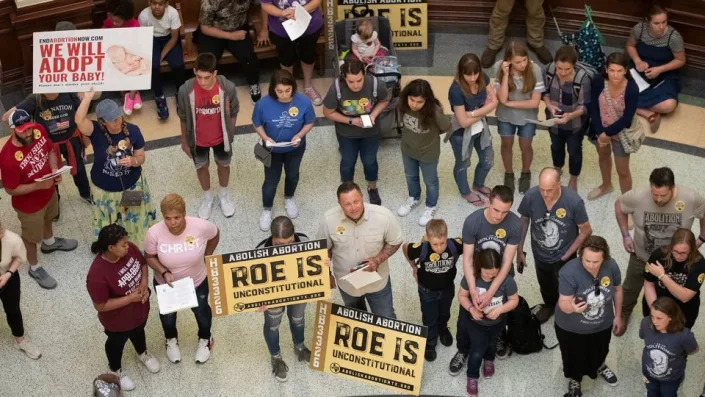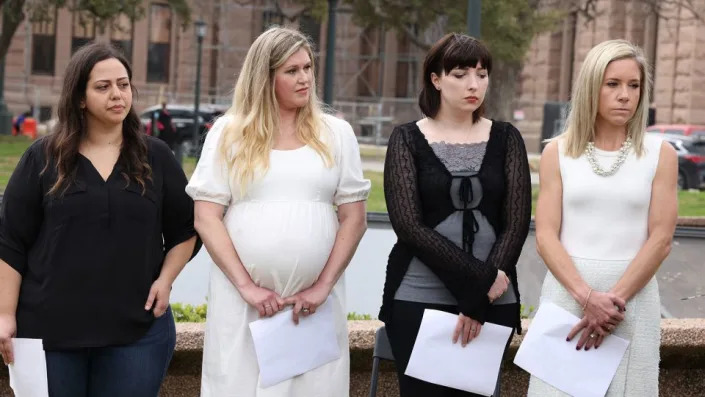Semafor
How Paramount buried a Vice documentary on Ron DeSantis at Guantanamo Bay
Max Tani – July 20, 2023

The Scoop
Showtime slated “The Guantanamo Candidate,” a 30 minute-long episode of its Vice documentary series, for May 28.
The episode opens with a shot of the outside the US prison complex at the southern tip of Cuba, where Florida Gov. Ron DeSantis served as a lawyer from March 2006 to January 2007.
Vice reporters had secured on camera interviews with a former detainee, Mansoor Adayfi, and a guard at the prison, staff sergeant Joe Hickman. Both said they remembered seeing DeSantis at the prison during a controversial detainee hunger strike. The Vice crew traveled to Guantanamo Bay to attempt to try to speak to military staff, and made several attempts to ask DeSantis about the allegations directly, eventually confronting him at a press conference in Israel, according to a detailed description provided to Semafor.
But Showtime viewers who turned on their televisions May 28 never saw the episode. (They were treated to a re-run of the scripted drama Yellowjackets.)
Showtime and Vice cited “scheduling” in a statement after The Hollywood Reporter noticed the missing episode.
But in fact, two people familiar with the incident said, the Paramount-owned cable channel ditched the DeSantis episode over fears of the political consequences. One person briefed on the decision told Semafor that the company’s Washington lobbyist, DeDe Lea, raised concerns about the piece.
Showtime declined to comment on the decision to pull the episode.
“We not only stand behind our rigorous reporting but are proud of the incredible journalism showcased in this story,” a spokesperson for Vice, Elise Flick, told Semafor.
Know More
The politicized decision to kill the DeSantis episode came as Showtime’s parent company, Paramount, cut costs to reflect a gloomy streaming business. The company folded a diminished Showtime under the streaming umbrella Paramount+, and laid off a wave of staffers, including the executive who greenlit prestige unscripted shows and documentaries.
The new president Chris McCarthy, has a background in less expensive reality TV.
But the first sign of trouble for the DeSantis episode came on only Thursday, May 25 days before it was set to air.
The episode had already been vetted by Vice’s internal legal team, and returned by Showtime executives without any requests for changes. Both Showtime and Vice had already sent around promotional materials and screeners for the episode to reporters.
On Showtime’s site, the network said the episode contained allegations from “former detainees that he was present at force-feedings that were condemned as torture by the UN” raised the “role of Navy JAGs in the investigation of the detainee deaths.”
But just four days before the show was set to air, Vice received a note from Showtime’s post-production staff, which normally focuses on issues like color and sound. The production team told Vice “the broader network group teams are taking a deeper internal look at this Sunday’s episode, which will delay its premiere.”
Vice, which had just declared bankruptcy and was desperate to save anything it could, proceeded delicately. Subrata De, Vice’s EVP and global head of programming and documentary, and Vice’s showrunner Beverly Chase, sent a note to the production team at Showtime asking for more details. They told employees they would return to the DeSantis piece later in the season.
The new Showtime team didn’t respond to their inquiries, people familiar with the situation said. And Showtime quickly scrubbed promotion of the episode from its website.
When the Hollywood Reporter broke the news a week later that the episode had been shelved, Vice asked that the two sides work together to draft joint statements to give to reporters, and a spokesperson told reporters that “we are very much still in discussion about the scheduling of this episode. We are proud of our reporting and of our continuing partnership with Showtime.”
But within days, it became clear that Showtime was not still in discussion about the scheduling of the episode. Executives at the network stopped communicating with editorial employees at Vice including De and Chase. And immediately after the seventh episode aired, the company filed a motion in bankruptcy court to opt out of its contract to pay Vice.
Max’s view
Showtime’s decision to kill the DeSantis story has gotten lost amid the two companies’ other woes — Vice’s bankruptcy, Paramount’s scramble to cut expensive original programming.
But the episode is in fact a rare, and serious, glimpse at how a big media company killed a potentially controversial story. Perhaps they had reason to be fearful: DeSantis showed that he was willing to take on a much bigger and more influential media company, Disney.
And that kind of decision is made far more likely by the fragile state of the television business, where “the challenges are greater than I had anticipated,” as Disney CEO Bob Iger said earlier this month.
Both Vice and Paramount have spent the last several months sharply reducing costs, laying off staff and gutting the operations that produced critically-acclaimed work. And Vice’s bankruptcy presented a good opportunity for Showtime to claw back at least several million dollars at a moment when it is on a much tighter budgetary leash within Paramount.
When Vice was at the top of the world, Showtime executives may have thought twice about canceling an episode it didn’t particularly care for. Of course, Showtime wasn’t the distributor of the Vice docuseries at its peak. That would be HBO, which unceremoniously parted ways with the Vice weekly years ago when its parent company gave a similar edict: Trim the fat. And with it, the risk.
The View From Tallahassee
DeSantis has declined to discuss his time at Guantanamo recently, but the Washington Post reported that he discussed it in previous interviews. He had advised guards they could force-feed prisoners, he said.
He said in 2018 that he learned from the hunger strikes that detainees “are using things like detainee abuse offensively against us. It was a tactic, technique and procedure.”
Notable
- “DeSantis had little authority to address these crises as a 27-year-old lieutenant at a notorious facility micromanaged from Washington. But it was a formative period for a career-minded officer who had enlisted hoping for a deployment to Guantánamo Bay, where he would come face to face with the realities of America’s least conventional war,” McClatchy reported.
- DeSantis was present for the investigation of three apparent detainee suicides whose circumstances remain in dispute, The Guardian wrote.
- “DeSantis was stationed at Guantanamo during a year marked by riots, hunger strikes and death,” according to the Independent.
- Vice is now looking for a new home for the series, according to THR.











